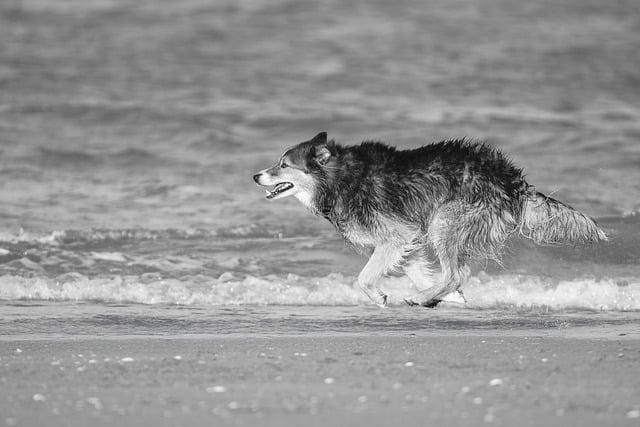Imagine walking through a park and suddenly spotting a gentle giant—a Great Dane towering over the other dogs. This majestic breed, along with others like the St. Bernard and the Irish Wolfhound, showcases the incredible diversity of our canine companions. But which breeds truly reign as the largest? From the massive Mastiff to the towering Great Pyrenees, these dogs are not just big in size; they embody loyalty, strength, and grace. Discover the top 10 largest dog breeds and find out why size matters in the world of dogs!
Contents
- Understanding the Criteria for Determining the Largest Dog Breeds
- Exploring the Unique Characteristics of the Top Ten Largest Dog Breeds
- Evaluating the Care Requirements for Large Dog Ownership
- Making an Informed Decision: Choosing the Right Large Dog for Your Lifestyle
- Q&A
Understanding the Criteria for Determining the Largest Dog Breeds
When it comes to identifying the largest dog breeds, several key criteria come into play. **Size** is the most obvious factor, typically measured by height at the shoulder and weight. Breeds like the Great Dane and the Mastiff are often at the forefront of discussions about size due to their impressive stature. However, it’s essential to consider not just the physical dimensions but also the overall build and structure of the dog, which can influence how they are perceived in terms of size.
Another important criterion is **breed standards** set by kennel clubs and organizations. These standards provide a framework for what constitutes a particular breed, including size specifications. For instance, the American Kennel Club (AKC) outlines specific height and weight ranges for breeds like the Newfoundland and the Irish Wolfhound. Understanding these standards helps in accurately categorizing and comparing the largest breeds, ensuring that enthusiasts and potential owners have a clear reference point.
Additionally, **genetics** plays a crucial role in determining the size of a dog. Some breeds have been selectively bred for larger sizes over generations, while others may have variations within the breed that can lead to significant size differences. This genetic diversity can result in individual dogs that exceed the typical size range for their breed, making it essential to consider the genetic background when assessing size. Breeders often focus on these traits to produce larger specimens, which can influence the overall perception of a breed’s size.
Lastly, **health considerations** cannot be overlooked when discussing large dog breeds. Larger dogs often face unique health challenges, including joint issues and heart problems, which can affect their overall well-being and longevity. Responsible breeding practices aim to mitigate these health risks, ensuring that size does not come at the expense of a dog’s quality of life. Understanding these health implications is vital for anyone considering adding a large breed to their family, as it emphasizes the importance of choosing reputable breeders who prioritize the health of their dogs.
Exploring the Unique Characteristics of the Top Ten Largest Dog Breeds
When it comes to canine companions, size can certainly make a statement. The largest dog breeds are not just impressive in stature; they also possess unique characteristics that set them apart from their smaller counterparts. These gentle giants often exude a calm demeanor, making them excellent family pets. Their size can be intimidating, but many of these breeds are known for their affectionate nature and loyalty to their families.
One of the most remarkable traits of large dog breeds is their **protective instincts**. Breeds like the Great Dane and the Mastiff have a natural inclination to guard their homes and loved ones. This protective nature, combined with their size, makes them formidable guardians. However, it’s essential to socialize these breeds from a young age to ensure they are well-adjusted and comfortable around strangers and other animals.
Another fascinating aspect of these breeds is their **exercise needs**. While it may seem that larger dogs require more physical activity, many of them are surprisingly low-energy. For instance, the St. Bernard is known for its laid-back attitude, often preferring a cozy spot on the couch over a vigorous run. However, regular exercise is still crucial for maintaining their health and preventing obesity, which can be a concern in larger breeds.
the **lifespan** of large dog breeds tends to be shorter than that of smaller breeds. This is an important consideration for potential owners. While they may bring joy and companionship for a shorter period, the bond formed with these dogs is often profound and lasting. Understanding the unique characteristics of these breeds can help prospective owners make informed decisions, ensuring they choose a companion that fits their lifestyle and family dynamic.
Evaluating the Care Requirements for Large Dog Ownership
Owning a large dog comes with a unique set of responsibilities that potential owners must carefully consider. These majestic creatures require more than just love and companionship; they demand a commitment to their physical, emotional, and social needs. Understanding these requirements is crucial to ensuring a harmonious relationship between you and your canine companion.
First and foremost, **exercise** is a fundamental aspect of large dog care. Breeds such as Great Danes and Mastiffs thrive on regular physical activity to maintain their health and prevent obesity. Daily walks, playtime in a secure yard, and engaging activities like fetch or agility training are essential. Without adequate exercise, large dogs can develop behavioral issues stemming from pent-up energy, leading to destructive habits and stress.
Nutrition is another critical factor in the care of large breeds. These dogs have specific dietary needs that differ from smaller breeds, often requiring specially formulated food to support their growth and overall health. It’s essential to provide a balanced diet rich in **proteins, vitamins, and minerals** to promote strong bones and muscles. Additionally, portion control is vital, as overfeeding can lead to obesity, which is particularly detrimental for larger breeds prone to joint issues.
Lastly, **socialization and training** play a pivotal role in the well-being of large dogs. Early exposure to various environments, people, and other animals helps them develop into well-adjusted adults. Consistent training reinforces good behavior and strengthens the bond between owner and pet. Investing time in obedience classes or training sessions not only enhances your dog’s manners but also ensures they are safe and manageable in different situations, making large dog ownership a rewarding experience.
Making an Informed Decision: Choosing the Right Large Dog for Your Lifestyle
When considering a large dog, it’s essential to align your choice with your lifestyle and living situation. Large breeds often require more space, both indoors and outdoors, to thrive. If you live in a small apartment, a giant breed may not be the best fit, as they need room to move around comfortably. Additionally, consider your daily routine; some large dogs have high energy levels and require regular exercise to stay healthy and happy.
Another critical factor is the dog’s temperament and personality. Different breeds have varying traits that can significantly impact your home life. For instance, some large dogs are known for their gentle nature, making them excellent family pets, while others may be more protective or independent. Understanding the breed’s characteristics can help you choose a dog that complements your lifestyle. Here are some traits to consider:
- Energy Level: Active breeds need more exercise and mental stimulation.
- Trainability: Some large dogs are easier to train than others, affecting your ability to manage them.
- Socialization Needs: Certain breeds thrive on social interaction, while others may be more reserved.
Lastly, think about your long-term commitment. Large dogs often have specific health needs and can be prone to certain conditions, which may require more veterinary care and attention. It’s crucial to research the breed’s common health issues and consider the financial implications of owning a large dog. By taking the time to assess your lifestyle and the needs of potential breeds, you can make a well-informed decision that leads to a fulfilling companionship for both you and your new furry friend.
Q&A
-
What are the top 10 largest dog breeds?
The top 10 largest dog breeds include:
- Great Dane
- Saint Bernard
- Newfoundland
- Irish Wolfhound
- Leonberger
- Tibetan Mastiff
- Great Pyrenees
- Scottish Deerhound
- Dogue de Bordeaux
- Bernese Mountain Dog
-
How is the size of a dog breed determined?
The size of a dog breed is typically determined by its height at the shoulder and weight. Breeders and kennel clubs set standards for each breed, which help to classify them into categories based on their size.
-
Are larger dog breeds more difficult to care for?
While larger dog breeds may require more space, food, and exercise, they can also be incredibly loyal and gentle companions. With proper training and socialization, they can thrive in various environments.
-
What are the benefits of owning a large dog?
Owning a large dog can offer numerous benefits, including:
- Enhanced protection and security
- Increased companionship and loyalty
- Encouragement for an active lifestyle
- Potential for service and therapy roles
These attributes make large dogs not only great pets but also valuable members of the family.
understanding the top 10 largest dog breeds not only highlights their impressive stature but also their unique qualities and needs. Whether you’re considering one as a pet or simply appreciate their grandeur, these magnificent dogs deserve our admiration and respect.

大家好,我是彼得潘,專業的手法身體治療師。我喜歡探索和研究各種主題,並透過與人工智慧的合作分享專業、實用、有趣的文章。我們定期進行人工審核,以確保內容的準確性。如果您發現文章中有任何不準確的地方,請隨時與我們聯繫,我們會及時糾正。您可以透過 [email protected] 與我們聯繫。



